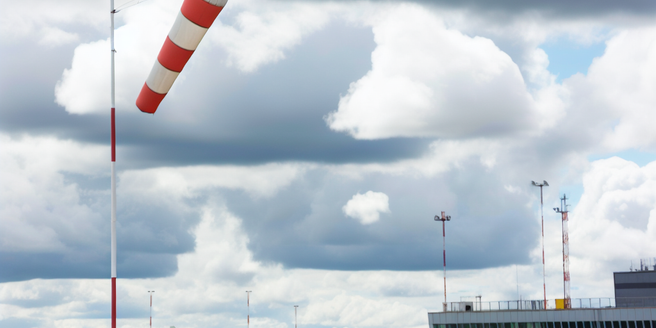
The History and evolution of Windsocks
The windsock has a long and fascinating history. Originating from a simple concept, it quickly evolved into an essential tool for weather monitoring. First used by sailors to understand wind patterns while at sea, it transitioned into a universally accepted tool for analyzing and predicting weather conditions. Even today, this humble invention is still an indispensable part of our daily lives. Its humble beginnings can be traced back to ancient Rome, where it was initially a piece of cloth tied to the top of a pole. Over time, the design improved, and the windsock took on a more conical shape for better wind direction detection. With the dawn of aviation, the importance of windsocks increased manifold. They became an essential tool for aviators to determine the wind’s direction and strength, ensuring safe takeoffs and landings.
How Windsocks Work: Understanding the Basics
Windsocks use basic physics principles to indicate the speed and direction of the wind. As the wind varies in speed and direction, it causes the windsock to move and point in the direction of the wind flow. The stronger the wind, the more horizontal the windsock appears, while in calm conditions it hangs limply due to lack of sufficient kinetic energy.
Aviators and flight crews use these indications to estimate wind conditions, essential for safe and smooth flight operations. The use of windsocks and their simple yet practical design have a significant impact in the aviation industry, assisting in navigation and safety precaution decisions during varying weather conditions. This straightforward concept involving natural forces underlines the importance of understanding weather conditions for aviation safety procedures.
Reading Windsocks: Interpreting Wind Direction and Speed
Learning to read windsocks is crucial for aviators as it indicates wind direction and speed. The windsock, a key device in the aviation industry, is a conical tube that reacts to airflow, pointing out the wind’s path. This indicates that the orientation of the windsock dictates the wind direction, acting as a live tracking system.
Interestingly, the wind sock’s angle of elevation also signifies the wind’s speed, and changes in the windsock’s position aren’t merely for aesthetics. For instance, a fully extended, or horizontal windsock indicates high wind speed. Alternatively, a partially extended windsock conveys the wind speed based on its extension level and angle from the pole; the less extended it is, the slower the wind.
This device is a crucial visual gauge in aviation to comprehend wind’s direction and speed. It’s like a perpetual dialogue between nature and machinery, aiding pilots in navigating their flights safely. Hence, understanding windsocks is not merely a skill, but an art, and an integral aspect of flying that every aviator must master.
Types of Windsocks and their Unique Features
Windsocks come in a myriad of varieties, each tailored for a specific use, showcasing the diversity inherent in their design. A crucial variety among these includes the aviation windsock that is known for its visibility and durability, fashioned from materials designed to survive harsh weather conditions and is brightly colored for clear visibility from a distance. Some designs feature reflective strips to enhance visibility in low-light conditions, enabling accurate interpretation of wind direction and speed during nighttime airport operations. Certain windsocks even include their own source of light, illuminating themselves for round-the-clock use in air traffic control. Additionally, windsocks play roles in maritime activities and chemical applications, adept at guiding seafarers and detecting chemical leaks respectively, underscoring their adaptability. Thus, the world of windsocks, with its myriad features from weather resistance, visibility enhancements through bright colors, reflective strips, and internal lights to unique usage adaptations, demonstrates a broad spectrum of possibilities.
Practical Tips for Windsock Maintenance and Installation
Regular maintenance and timely replacement of windsocks are essential to ensure their accuracy, as exposure to harsh weather can cause significant wear and tear, reducing their effectiveness. The installation site must be free from obstructions, both natural and man-made, to avoid distorting wind flow and producing inaccurate readings. Also significant is the height at which a windsock is installed, ideally twice the distance from the nearest obstruction. Thus, regular upkeep, careful site selection, and appropriate installation height are integral to the accurate functioning of windsocks, ensuring consistent and precise wind readings for their intended use.
